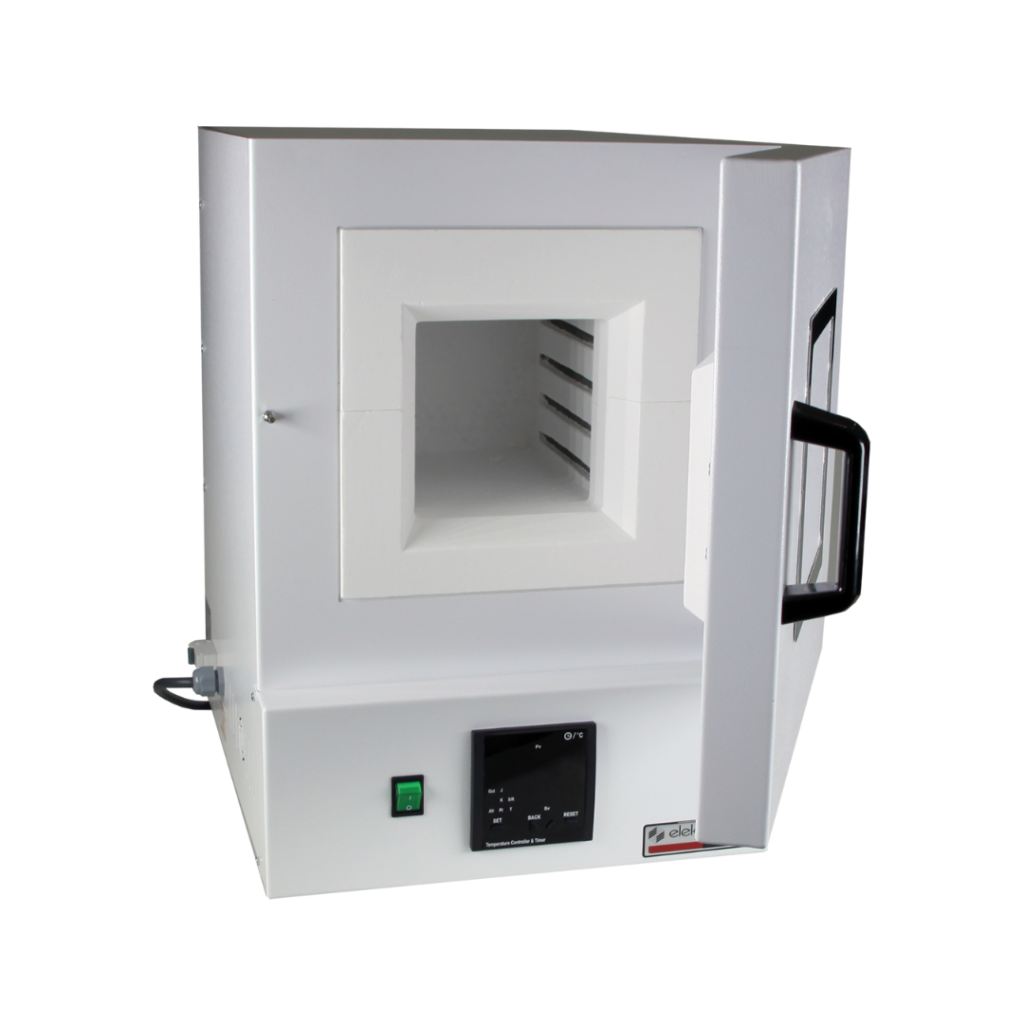The high-temperature furnace is specialized equipment and utilized for processes requiring extreme temperatures. It is engineered to achieve and keep temperatures above 1100 degrees celsius. This makes it suitable for material research & development studies, metal heat treatment processes like annealing, tempering, hardening, ceramic materials & some other materials production and various chemical reactions etc.
Read More
The bench furnace can be described as a less, smaller version of the higher-temperature furnace. It is usually utilized for smaller-scale projects or in labs where working space is most of the time restricted. That’ s why they are usually mentioned as laboratory furnaces. However, they are called with different names depending on the small modifications which are required for different applications or manufacturer companies mentioned etc. Muffle furnace, ashing furnace, boxing furnace are examples of different identification.
Although smaller, they can attain and sustain high temperatures, making it ideal for various heat-treatment methods and research studies.
Laboratory furnaces are mainly selected according to their working temperatures and volume of the working space which is called the inner chamber.
Working temperature range of the laboratory furnaces usually starts from 700 degree celcius. Widely used range is 750 oC – 1200oC. It is necessary to make main changes for the insulation materials, electrical and electronics control, heating elements etc., if working temperature above 1200 oC is required. Temperatures above 1200 oC, 1300 oC – 1800oC furnaces are required for unique applications.
The volume of the laboratory furnaces could differ depending on the working purposes. Sure, furnaces for laboratory use are smaller, generally ranging between a few liters to just a one cubic meter.Larger capacities preference depends on the accommodation of more samples or multiple samples at once or manufacturing processes.
Precise temperature control, homogeneous temperature distribution, good insulation, user friendly menu, control options are some of the basic details of the laboratory furnaces which are decisive to be preferred. Of Course lifetime, straightforward to maintain are also some of the other factors.
FREQUENTLY ASKED QUESTIONS ( FAQ )
What is the laboratory Furnace?
They are high temperature furnaces. Mostly, they are mentioned as laboratory furnaces because of their small sizes and used for laboratory studies more than production.
What is the temperature range of the laboratory furnaces ?
Laboratory furnace applications are usually implemented between 700 oC – 1200 oC. Of Course it depends on the process, properties and conditions of the requirement of the purposes.
What is the maximum working temperature of the laboratory furnaces ?
1200oC furnaces fulfill the requirements of many processes. However, some unique processes are performed under higher temperatures. 1300oC-1800oC furnaces are also widely used. 2200oC, even 3000oC applications are experienced for rare processes.
Laboratory furnaces are mentioned with different names. What are the differences ?
Small scale high temperature furnaces are called laboratory furnace, muffle furnace, box furnace, ashing furnace etc. They don’t have major differences. Even some of them are called as a different type because manufacturing company mention them with their definition. Small modifications, optional tools, small design changes and use for some specific tests give their name.
What are the criterias to select a laboratory furnace ?
Main aim of these furnaces is to achieve high temperatures above 700oC. So that required working temperature is the first step to select the laboratory furnace. Capacity of the furnace is the other selection criteria. Inner chamber volume is decisive to implement your work. Precise temperature control, homogeneous temperature distribution, security precautions, options to control the heating processes, user friendly menu are some of the other properties of the furnaces to prefer for your work. Of Course lifetime of the heating elements, overall lifetime of the furnace are important criterias.
What are the widely used fields ?
High temperature furnaces are used for different applications. Ash tests, metal treatment processes, R/D studies, and ceramic productions are the main application fields of the laboratory furnaces. The spectrum is very wide, if you work with materials. For example, annealing, tempering, quenching processes are only some of the heat treatment processes to use furnaces. Automotive, aerospace, chemical industries, university laboratories can be specified as the laboratory furnaces field of use.
What is the ash test ?
Ashing is a widely used test to decide for the proper raw material. Plastic materials, wheat, coal, petroleum products are some examples of these raw materials. Ash test is usually performed between 750oC-950oC depending on the raw material. Related standards should be followed to complete the ash test properly.


